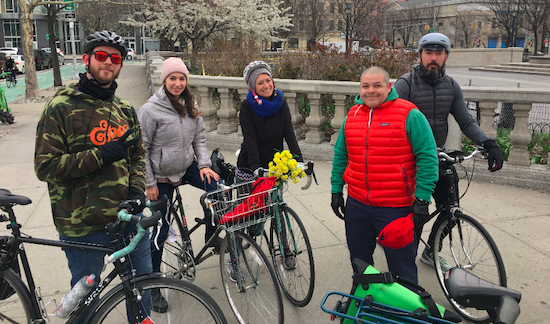All aboard! ‘Bike Train’ prepares commuters for ‘L-pocalypse’
Two wheels will replace steel wheels during horrific tunnel work

Bike Train riders like these are already preparing for two-wheeled commutes in anticipation of the L train shutdown next year.
There are plenty of excuses for not riding a bike in New York City: you’re tired, you’re scared of being hit, the city streets are a nightmare of double-parked cars, rogue drivers and even cops in bike lanes. But a year from now, when the MTA shuts down the L train between Williamsburg and Manhattan, you’ll need to set aside those concerns simply to get to work.
That’s the idea behind the BikeTrain, a fledgling program that started this month, long in advance of next April’s “L-pocalypse,” to help newbie cyclists join the fight on our mean streets.
And maybe even win it.
